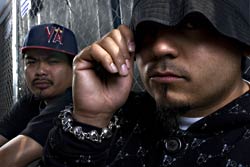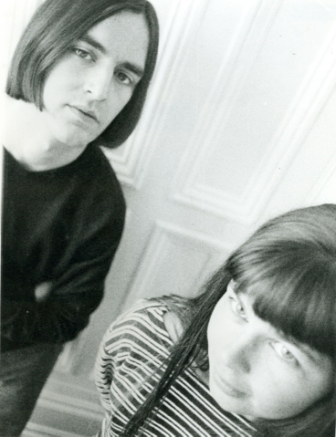Hip-hop is no longer just hip-hop. It has become a series of subgenres, region-specific or not, that range from crunk, gangster, and grime to hyphy, emo, and crack-rap. Mainstream hip-hop radio stations have embraced the trends, some more than others, diluting their minuscule playlists with the same lazy rhymes and dumbed-down beats of today’s “hip-hop superstars” at least once an hour. You don’t have to own a radio to understand this, nor do you need a Clear Channel or major-label executive to tell you that this is just the way it is these days. Repetition and a basic hook sell, and it is what keeps people coming back.
Rather than fight it, Seattle’s own Grayskul have embraced it and called it their own. Their second and latest album, Bloody Radio, is a conceptual opus that adopts the various formulaic styles of hip-hop found all over the FM dial while maintaining their substantially dark signature creed and independent freedom.
“There are people that really handle it that are good, like Ludacris, Eminem, and Busta Rhymes. But the majority of it sucks,” says Onry Ozzborn, who, along with fellow Oldominion collective member JFK, makes up Grayskul. “A lot of groups get frustrated and want to talk shit about everything and be like, ‘Screw this gangster rap and this pop.’ So J and I just said, ‘Why don’t we just do our version of it?’ We just kind of broke down every genre of hip-hop, since hip-hop isn’t just hip-hop—it’s crunk, it’s hyphy, it’s whatever.”
Bloody Radio marks a vast departure from their 2004 debut, Deadlivers, their first for indie hip-hop heavy-hitter Rhymesayers. On Deadlivers, Ozzborn and JFK assumed the aliases of Reason and Fiddleback Recluse, respectively, charting a dark, alienated comic-book fantasy blurred with reality. It was futuristic, symphonic, and troubling, very much in the vein of Cannibal Ox (one of Grayskul’s notable influences). “If [Bloody Radio] would’ve sounded anything like Deadlivers, then we would’ve been goth-rap for the rest of our lives,” admits Ozzborn.
“And rap superheroes,” adds JFK.
“We just took the whole superhero thing and created metaphors for it because that’s pretty much what MCs are—everybody only knows them by their alias and their style and how they spit,” says Ozzborn.
In addition to the diverse musical curveballs Grayskul throw out on Bloody Radio—the trap-music stylings of Clipse on “Dope” and “How to Load a Tech,” the nods to Houston rap on “Haunted,” U.K. grime on “Scarecrow,” and Outkast’s verbose ATL party action on the title track—Ozzborn and JFK have reinvented their lyrical personas as Count Draven and Count Magnus, respectively.
“New characters for a new album—Kool Keith does it, MF Doom does it. I’m not trying to bite at all, but it’s just a new chapter in a book. Or a new book introducing a new concept,” says Ozzborn, “We think differently about certain things, and it just kind of goes with the ways we’re feeling.”
Working with producers like Mr. Hill, Smoke, Coley Cole, the Gigantics (all part of Oldominion), Portland’s Sapient (of the Sand People), and Seattle’s Bean One, as well as Aesop Rock and Atmosphere’s Slug on “The Office,” has enabled Grayskul to capture a vastly different sound from song to song.
“Imagine driving through a desert late at night, and you’re headed somewhere. It’s 3 in the morning, and you can only find two or three stations, and then you just run across this crazy-ass station that plays music that kind of sounds familiar but is twisted a little bit,” says Ozzborn. “That’s the way I look at [Bloody Radio].”
Bloody Radio is packed with an arsenal of potential hits that deserve the same, if not more, airtime as their less-substantial major-label peers. If Grayskul are going to hit it big, now is the time, when they can perhaps change the face of radio in the future.
“I’ve been getting calls from people saying, ‘You just made the one you’re supposed to make,'” says Ozzborn, “I look at [our career] as college—we’re trying to get our master’s degree, and we’re in our seventh, eighth year. Now we’re about to graduate.”






